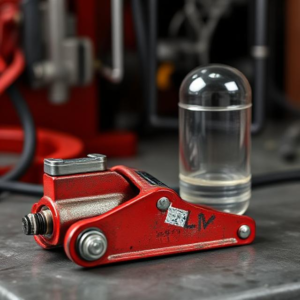1. Pascal’s Law (Pascal’s Principle):
Pascal’s Law is a principle in fluid mechanics that says: When pressure is applied to a confined fluid, the pressure is transmitted equally in all directions throughout the fluid.
In simpler terms, if you push on a liquid or gas inside a closed container, that push (or pressure) gets spread out evenly in all directions.
Real-life example: Think about a hydraulic system, like a car jack. If you apply force to a small piston (the part you push), it creates pressure that is transmitted through the fluid to a larger piston, which then lifts a heavy car. This is an application of Pascal’s Law, where the pressure from a small area can be used to lift something much heavier by spreading the force over a larger area.

Formula of Pascal’s Law:
Where:
is the pressure applied (in Pascals, Pa).
is the force applied (in Newtons, N).
is the area over which the force is applied (in square meters, m²).
In essence, Pascal’s Law shows how pressure is distributed in a fluid, and how small forces can generate larger forces in systems like hydraulic lifts.
2. Pascal: Unit of Pressure :
- Pressure is the amount of force applied to a certain area.
- Pascal (Pa) is the unit used to measure pressure. It tells us how much force is acting on each unit of area.
1 Pascal (Pa) is defined as the pressure created when 1 Newton of force is applied over an area of 1 square meter.
How is Pascal (Pa) Defined?
if 1 Newton of force on an area of 1 square meter, the pressure will be 1 Pascal.
In summary:
- Pascal’s Law explains how pressure is distributed in fluids and how small forces can be used to lift large objects (like in hydraulic systems).
- Pascal (Pa) is the unit of pressure, not energy. 1 Pascal means a force of 1 Newton is applied over an area of 1 square meter.
Tags: 1 Pascal = 1 Newton per square meter, area (square meters), car jack, closed container, confined fluid, Fluid Mechanics, fluid pressure, fluid systems, force (Newtons), force multiplication, hydraulic lift, hydraulic system, large piston, mechanical advantage., P = F/A, Pascal (Pa), Pascal's Law, Pascal's Principle, pressure (Pascals), pressure applied equally, pressure definition, pressure distribution, pressure formula, pressure measurement, pressure transmission, real-life applications, small piston, unit of pressure


